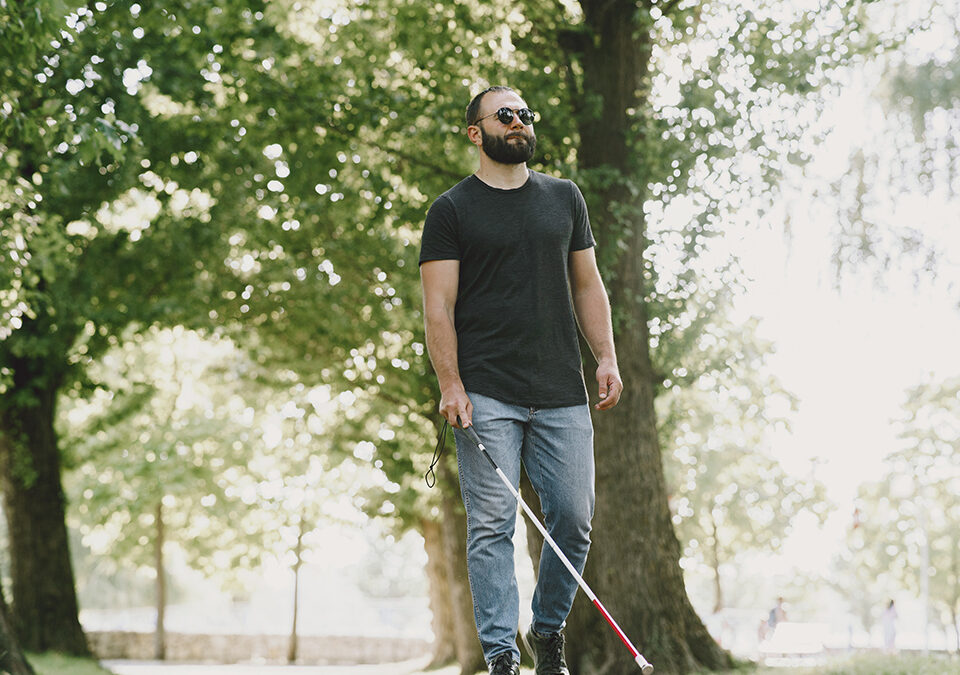
What Is A Diabetic Coma & Why Does It Happen?
January 3, 2022
What You Need To Know About Diabetic Ketoacidosis
January 3, 2022Diabetic retinopathy poses a risk to any diabetes patient, whether it is type 1, type 2, or gestational diabetes that you suffer from. Typically, the risk of developing diabetic retinopathy increases over a period of time. So, the longer you have diabetes, the more likely it is that you will develop the condition. With effective management of diabetes, the risk of developing diabetic retinopathy can be lowered considerably. But what happens if you do develop diabetic retinopathy or already have the condition?
Diabetic Retinopathy And Vision Loss
Diabetic retinopathy and blindness are closely linked as it is the leading cause of vision loss worldwide. However, this does not mean that vision loss is inevitable.
Diabetic retinopathy is a progressive condition. It develops as a result of damage to small blood vessels in the retina. Over time diabetes affects blood vessels throughout the body, including those in the retina. These blood vessels then leak blood and other fluid, resulting in swelling of the retinal tissue, which causes blurring or clouding of vision.
In most cases, the condition affects both eyes. If diabetic retinopathy is left untreated, the risk of it causing blindness is extremely high. Blood sugar management is a critical part of both prevention and control of diabetic retinopathy as fluid accumulates within the lens rapidly when blood sugar levels remain elevated for a prolonged period.
Can Diabetic Retinopathy Be Treated?

Yes, the progression to blindness from diabetic retinopathy is not a certainty as there are many treatments to manage the condition. In the early stages, treatment may not even be required and your ophthalmologist will simply need to monitor your eyes more frequently. Depending on your condition, you may need to undergo a comprehensive dilated eye exam as frequently as every two to four months.
It is also critical at this stage to work closely with your endocrinologist or diabetes doctor to find ways to manage your diabetes more effectively. This can involve changes to medication, diet, and lifestyle as good blood sugar control can be adequate to slow the progression of diabetic retinopathy in the early stages.
In addition to blood sugar control, it is also essential for you to keep blood pressure and cholesterol levels in check to lower the risk of vision loss. If there is already vision impairment, treatment will not be able to reverse much of this damage, but it can help to prevent or slow further progression of the condition. Treatments for late diabetic retinopathy in the later stages can include:
Injections – Anti-VEGF drugs are injected into the vitreous of the eye to slow or reverse diabetic retinopathy and are fairly effective. These medications work by stopping the growth of new blood cells in the area, thereby decreasing fluid buildup. Corticosteroids may also be injected to treat the condition. ‘
Laser Treatments – Photocoagulation laser treatment may be used to stop or restrict the leakage of blood and fluid to reduce pressure within the eye by producing precise laser burns. Laser panretinal photocoagulation could also be used to produce scattered laser burns that shrink abnormal blood vessels. While this can help prevent further vision loss, you may experience reduced peripheral or night vision after the procedure.
Eye surgery – Doctors may recommend a type of eye surgery that is known as vitrectomy if there is extensive bleeding or formation of scar tissue in the eye. A surgeon will remove blood that accumulates in the vitreous of the eye, as well as scar tissue, via a tiny incision on the eye.
Although diabetic retinopathy can be treated to prevent or lower the risk of blindness, the most effective strategy to prevent vision loss is effective management of blood sugar levels and undergoing routine dilated eye exams.




